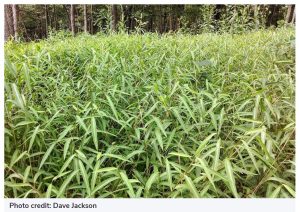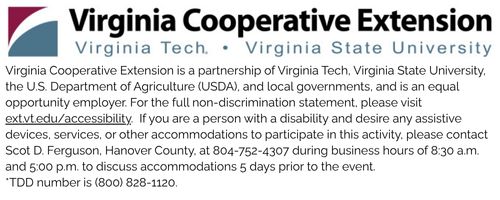 Managing invasive plants in Virginia is crucial for preserving the state’s native ecosystems and biodiversity. Invasive plants have the potential to outcompete native species for resources such as sunlight, water, and nutrients, leading to a decline in native plant populations.
Managing invasive plants in Virginia is crucial for preserving the state’s native ecosystems and biodiversity. Invasive plants have the potential to outcompete native species for resources such as sunlight, water, and nutrients, leading to a decline in native plant populations.
This disruption can have cascading effects on the entire ecosystem, impacting wildlife habitat, soil health, and even water quality. Additionally, invasive plants can pose significant economic costs, such as reducing agricultural productivity and increasing expenses for landowners and managers tasked with controlling their spread.
By actively managing invasive plants through strategies like monitoring, control efforts, and public education, Virginia can protect its natural heritage and ensure the long-term health of its ecosystems for future generations.
The resources below will help you identify and manage the invasive plants on your property. Remember if you have questions, you can contact our help desk.
Labelling Invasive Species – SB1166
Did you know that in 2023, Virginia law § 10.1-104.6:2. (Invasive Plant Species) was passed, requiring the Department of Conservation and Recreation to compile a list of invasive species and update that list every four years?[1]
- 3.2-3810of the Code of Virginia was amended via SB1166 and signed by Gov Youngkin on March 24, 2025, by listing the Latin names of 39 invasive species and requiring retailers to label any plants on that list as invasive.[2] This will help gardeners make more informed decisions about what plants to add to their gardens and to protect pollinators. The law takes effect in 2027, allowing time for the State Agencies to formalize the signage and communications to affected retailers.
Retail establishments must not only prominently label invasive plants, but also provide guidance on alternatives, and provide information regarding invasive species.
Failure to comply with this law can result in a stop-sale order. Further non-compliance can bring a fine of $2500 and/or 12 months in jail.[3]
Many of these invasives are regularly seen in garden centers as ornamental shrubs or ground covers: English ivy, Chinese privet, Periwinkle, yellow irises, burning bush, etc.
Often, homeowners wage an ongoing battle against English Ivy (Hedera helix), brought to Virginia by the colonists. It IS an effective groundcover, but quickly takes over, choking out all native undergrowth. It climbs and attaches itself to trees, affecting photosynthesis and causing trees to be more susceptible to wind and storm damage. On houses, it weakens the structure.
Effective management includes mechanical removal, the judicious use of herbicides, and biological controls. As Hanover Master Gardeners, we play a crucial role in helping to educate communities and mitigating the impact of these plants.
While adding the Latin names to the bill is useful, as these do not change from region to region, a homeowner typically is not familiar with them and refers to them by their common names.
For reference, an updated list of the Latin names of the species included in this revised bill, along with the common name, is provided here:
No. Latin Name, Common Name
1 Acer platanoides, Norway maple
2 Akebia quinata, Chocolate vine
3 Albizia julibrissin, Mimosa tree
4 Arum italicum, Italian Lords & Ladie, Cuckoo’s pint, Italian lily
5 Berberis thunbergii, Japanese barberry
6 Buddleja davidii, Butterfly bush
7 Cenchrus purpurascens, Chinese fountaingrass
8 Citrus trifoliata, Bitter orange, Chinese orange
9 Clematis terniflora, Sweet autumn clematis
10 Egeria densa. Brazilian waterweed
11 Elaeagnus pungens, Thorny olive, silverthorn
12 Euonymus alatus, Burning bush
13 Euonymus fortune, Wintercreeper euonymous
14 Glechoma hederacea, Ground ivy, creeping charlie
15 Hedera helix, English ivy
16 Iris pseudacorus, Yellow iris, Yellow flag iris
17 Ligustrum sinense, Chinese privet
18 Lonicera fragrantissima, Wintering flowering honeysuckle
19 Lysimachia nummularia, Golden creeping jenny
20 Mahonia bealei, Beales barberry
21 Miscanthus sinensis, Chinese silvergrass
22 Morus alba, White mulberry
23 Murdannia keisak, Asian spiderwort
24 Myriophyllum aquaticum, Parrot feather
25 Nandina domestic, Heavenly bamboo
26 Oshuna crassipes, Water hyacinth
27 Paulownia tomentosa, Princess or Empress tree
28 Perilla frutescens, Beefsteak plant
29 Phyllostachys aurea, Golden or fishpole bamboo
30 Pyrus calleryana, Callery pear
31 Rubus phoenicolasius, Blackberry, wineberry
32 Securigera varia, Crown vex, ax seed
33 Spiraea japonica, Japanese spirea
34 Triadica sebifera, Chinese tallow, chicken tree
35 Tripidium ravennae, Hardy pampas grass
36 Vinca major, Bigleaf periwinkle
37 Vinca minor, Periwinkle
38 Wisteria floribunda, Japanese wisteria
39 Wisteria sinensis, Chinese wisteria
4 2025, SB1166, Saddam Salim(D) & Jennifer Boysko, https://lis.virginia.gov/bill-details/20251/SB1166
Note: for a listing of invasive plants as identified by the Virginia Department of Conservation and Recreation(DCR), Division of Natural Heritage, please see the
“VIRGINIA INVASIVE PLANT SPECIES LIST” document on their website: https://www.dcr.virginia.gov/natural-heritage/document/nh-invasive-plant-list-2024.pdf.
[1] Code of Virginia, , § 10.1-104.6:2. Invasive plant species, 2023 https://law.lis.virginia.gov/vacode/title10.1/chapter1/section10.1-104.6:2/
[2] Invasive plant species; retail sales, penalty, delayed effective date January 1, 2027, SB1166 of 2025, Saddam Salim(D) & Jennifer Boysko(D) , https://lis.virginia.gov/bill-details/20251/SB1166.
[3] Code of Virginia, § 18.2-11. Punishment for conviction of misdemeanor, 2000.
By Master Gardener, Ann Marie Keim
Invasive Resource Guide
Invasive Species and Their Management – Resources
National Invasive Species Information Center (USDA)
Center for Invasive Species and Ecosystem Health – University of Georgia
https://www.bugwood.org/
https://www.eddmaps.org/
North American Invasive Species Management Association – (membership-based)
*Webinars are accessible here on the NAISMA YouTube channel
Virginia Department of Conservation and Recreation – Natural Heritage Program
Virginia Department of Forestry (Includes specific resources for controlling Tree of Heaven)
Recommended resources for individual species:
Tree of Heaven (Ailanthus altissima) – Penn State Extension
Chinese privet – Alabama A&M and Auburn Extension
English ivy, manual removal – Rod Simmons, Natural Resource Specialist, City of Alexandria
Field Guide to the Identification of Japanese Stiltgrass (w/ lookalike comparisons)
Japanese Stiltgrass – Penn State Extension
Thank you to Laura Greenleaf, Invasive Plant Management Coordinator for the James River Park System, for providing these resources. (February, 2024)
Invasive Plant Management | Webinar May 12th, 2023
Dr. Laurie Fox and Ed Olsen’s presentation on invasive plant management and answer questions on the topic. This presentation will be available as a MG resource after the webinar.


